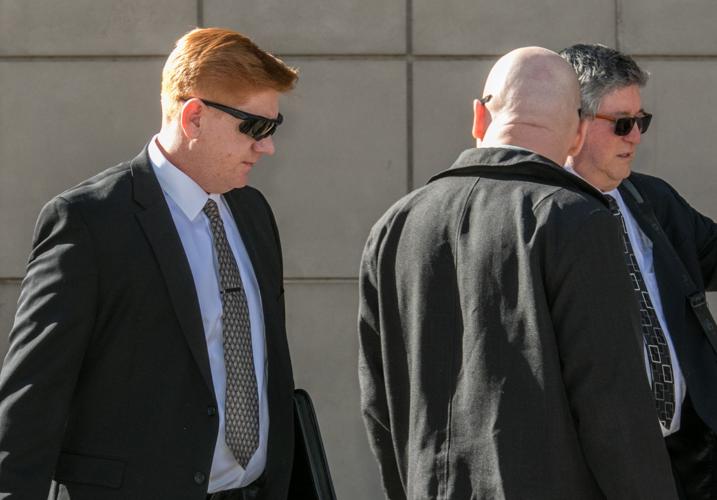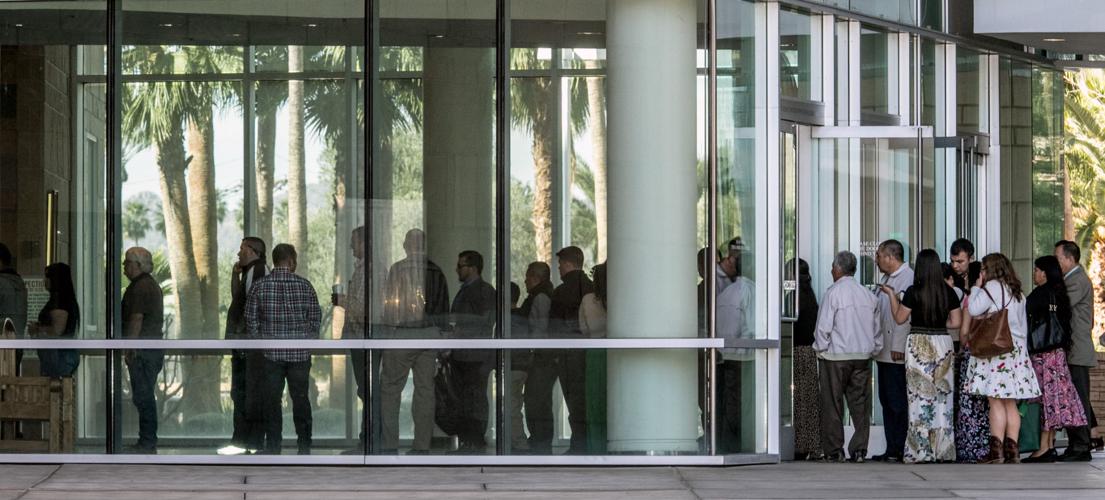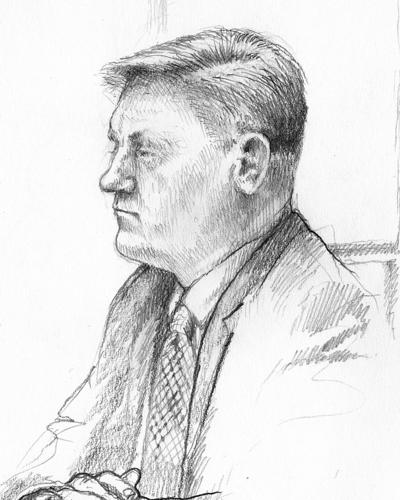For prosecutors, Border Patrol agent Lonnie Swartz is the man who in the span of 34 seconds fired 16 shots through the border fence, killing an unarmed Mexican teenager.
To the defense, he is an agent scared to death, operating in a busy drug-trafficking area, who had to make a split-second decision to protect himself and his fellow law enforcers from a group of rock throwers — including the 16-year-old Mexican teen.
The government and defense presented their cases to the jury of 11 women and five men — including four alternates — during the first day of Swartz’s trial Wednesday in U.S. District Court in Tucson. He is charged with second-degree murder in the death of Jose Antonio Elena Rodriguez.
“What did Jose do to merit being shot to death? He threw rocks, ladies and gentlemen, he was supporting two drug smugglers who had already left their marijuana in the United States … that’s not a death-penalty offense,” said U.S. Assistant District Attorney Mary Sue Feldmeier. “But on that day, Lonnie Swartz became the judge, the jury and the executioner.”
On Oct. 10, 2012, at about 11:30 p.m., Border Patrol agents and Nogales Police Department officers saw people drop a drug load over the border fence and try to flee back into Mexico. But as the two suspected smugglers tried to climb the 22-foot high border fence, others on the Mexican side began pelting the agents with rocks.
Agents and officers ordered them to stop, but they continued throwing rocks and Swartz started firing. Elena Rodriguez, who was among those throwing rocks, was shot eight times in the back and twice in the head.
Feldmeier told the jury the evidence will show Swartz “calmly and slowly” walked across the street toward the fence when the rocks started coming over, that he then reached the fence and put his gun through the first bollard. “Not satisfied with what he sees, within a second he moves it to a second bollard and squeezes the trigger three times.”
Then he went down the fence line 45 feet, “the entire time the victim is on the ground laying face down,” she said. Swartz put his gun through the 4-inch gaps between the bollards and during the next 10 seconds fired 10 more shots. “He backs up and reloads and puts his gun back through fence: 1,001, 1,002, 1,003,” she counts, and tells the jury that video then shows Swartz backing off from the fence.
“This is not an immigration case, it’s not a drug case; this is a second-degree murder case,” Feldmeier told the jury. “It’s whether or not the killing was unlawful, that’s the only issue in this case.”
Feldmeier told the jury agents are held to the same standards as anyone else — “there’s no special law enforcement self-defense,” she said.
But Sean Chapman, one of the attorneys representing Swartz, said the government’s version of what happened has no relation to what it is to be in the Border Patrol, or to what happened.
Throughout his opening statement, Chapman emphasized how agents are different from people like the jury or the attorneys. He said the Border Patrol is essentially a military organization created to enforce federal law where there’s a risk of violence all the time. “It’s the mindset that they have, the way they are trained. … They don’t think like we do; they think based on their training.”
Chapman described a dangerous border with drug scouts on both sides, stash houses and load vehicles to transport the drugs — an operation that includes rock throwers to distract agents and help the drug loads get through or to avoid arrest.
“Smugglers can be dangerous and violent when in pursuit,” he told the jury. There’s a lot of money involved, he said, as 1 pound of marijuana sells on the street for $800. He said one of the two men climbing the fence back to Mexico had an 8-inch knife.
And in the Border Patrol, agents are trained to consider rocks as potentially deadly weapons, he said, and to use deadly force if the agent or a third person is in danger of serious bodily injuries.
Chapman said several times that agents are trained to respond to rocks and are not required to seek cover or stand back — which is what another agent at the scene testified to doing — and that agents may perceive threats differently.
He said he will show how Swartz thought then-Border Patrol agent Shandon Wynecoop and a Nogales Police Department dog had been hurt by the rocks and he had to act before someone else was seriously hurt.
Wynecoop testified that he briefly drew his weapon but holstered it. He didn’t remember saying anything about getting hurt when a rock landed close to where he was standing and rolled onto his boot.
While Swartz did move locations and fired again, thinking it was a different rock thrower, Chapman said the evidence will show Elena Rodriguez was killed from one of the first shots fired. The shots were justified, given the perceived threat, and therefore, the fact that he fired again is not relevant, Chapman said.
“The case should have never been brought to court. Lonnie Swartz is doing his job attempting to defend his fellow agents. Lonnie made a decision based on his training and it was the right one,” he said. “All you have to think about is that the man started crying and threw up,” he said. “He wasn’t celebrating; he was doing what he thought was right.”
The defense attorneys say they have a witness who puts Elena Rodriguez on the U.S. side before the shooting and who claims the teenager was part of the smuggling operation.
Elena Rodriguez’s decision to take part in the smuggling operation and to throw rocks at the agents is what caused his death, Chapman said.
But to the prosecutors, the evidence will show the shooting was unjustified, “from the moment the defendant left cover and calmly and deliberately walked towards the fence,” Feldmeier said. “His colleagues were all under cover. No one else was in danger. He wasn’t obviously in danger.”
Use of deadly force should be the last resort, she told jurors, “before we take a human life.”
Testimony from agents and local police officers who were at the scene that night will continue Thursday, March 22.






